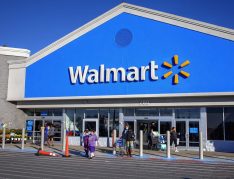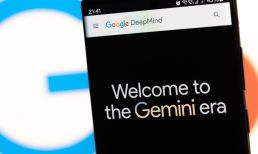As toys and games retailers look to adapt to consumers’ evolving habits and preferences, Hasbro is seeing the industry transformed by more adult and more digitally engaged customers.
The toy and game company shared on a call discussing its Q2 2024 financial results Thursday (July 25) that the business is changing as digital engagement rises and adults become more playful.
“It’s about skating to where the puck is going as opposed to where the puck has been,” CEO Chris Cocks said. “I think physical products kids will always be important. But when you look at what the mega trends are inside of the business of play, play is aging up, play is going more international, it’s going more digital, it’s going more direct.”
The company generates over 60% of its revenue from consumers aged 13 and older, a group described as “kidults,” indicating a strong following among teenagers and adults. This demographic’s engagement is driven by a mix of digital innovation and strategic licensing partnerships. Hasbro’s ability to cater to this audience through products like Magic: The Gathering and digital platforms like D&D Beyond shows its adeptness at tapping into the interests of older consumers.
Still, PYMNTS Intelligence research finds that parents are hobby goods companies’ best customers. The study “The Last Transaction: Family Spending Habits Reveal Merchant Opportunities in Retail and Travel” found that 16% of those who are married with children in the household cited books, music or hobby goods as their most recent non-grocery retail purchase. This share was considerably higher than the 3% of those who are single and living with children, the 6% of those who are married and not living with children and the 10% of those who are single without children at home who said the same. Still, it is notable that the final group represents the second-greatest engagement.
Calling in Reinforcements
Hasbro is turning to partnerships to help it reach consumers in more parts of their day-to-day lives.
Advertisement: Scroll to Continue
“Partners are becoming more and more important to be able to extend brands into additional aisles, whether that’s the toy category or outside of the toy category, and additional experiences.”
Key to this strategy is Hasbro’s relationship with licensing partners and entertainment giants like Disney. In May, the company launched a Peppa Pig theme park in Germany in partnership with Merlin Entertainments, which already runs a number of Legoland parks, among others. By aligning with such established entities, Hasbro can tap into new categories, drive loyalty and broaden its audience.
These partnerships are not limited to digital ventures. Hasbro continues to invest in traditional categories, with successful brands like Magic: The Gathering and Lego, which bridge the physical-digital divide and appeal to older, more invested consumers. With 150 projects in development or active, many of which rely on such partnerships, these partnerships are central to Hasbro’s ability to integrate its brands into more facets of consumers’ everyday lives.
Proof Is in the Pudding
Hasbro’s changes are evidently paying off. While revenue fell by 18% year over year, largely due to the company’s selling off its eOne film and television business last summer, net earnings rose to $138.5 million, versus Q2 of last year’s net loss of $256.6 million.
“Where we’re headed is a much profitable place as we’re leaning into games and IPs,” Hasbro EVP and CFO Gina Goetter said.
Hasbro’s transformation reflects a broader shift in the entertainment industry, where digital innovation is key to meeting the evolving preferences of consumers. By investing in digital gaming, leveraging strategic partnerships and keeping in mind the needs of its “kidult” customers, Hasbro is not only adapting to current trends but also positioning itself for future growth.




